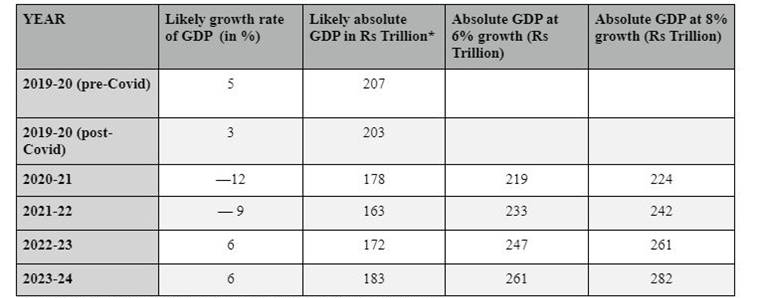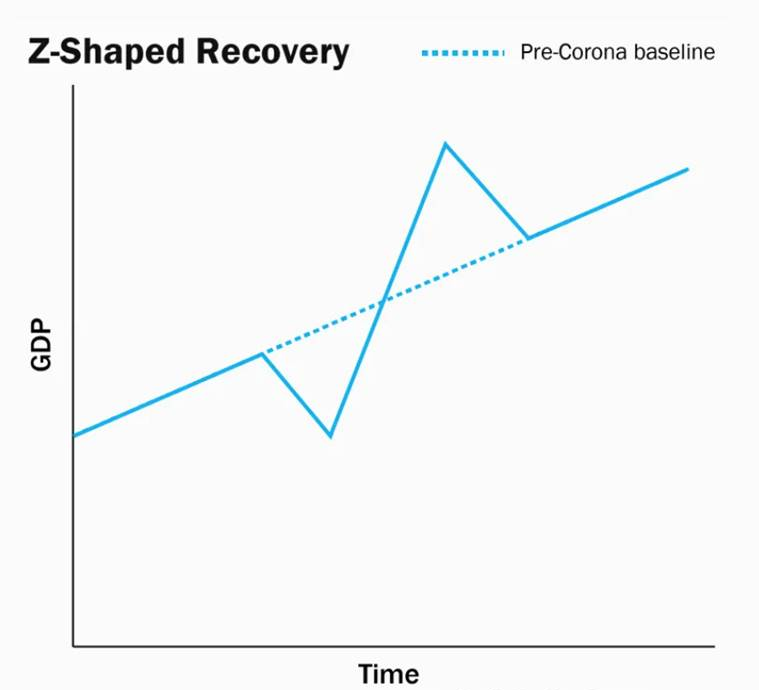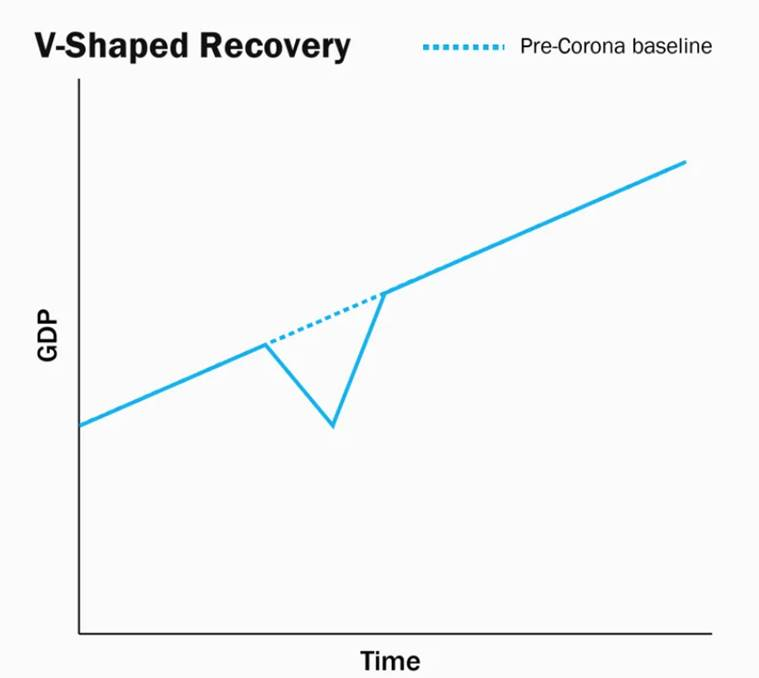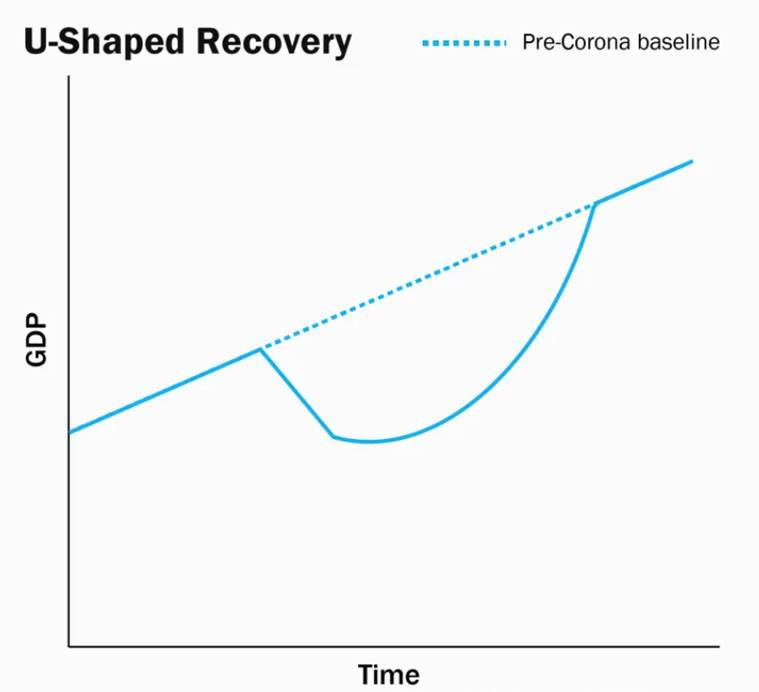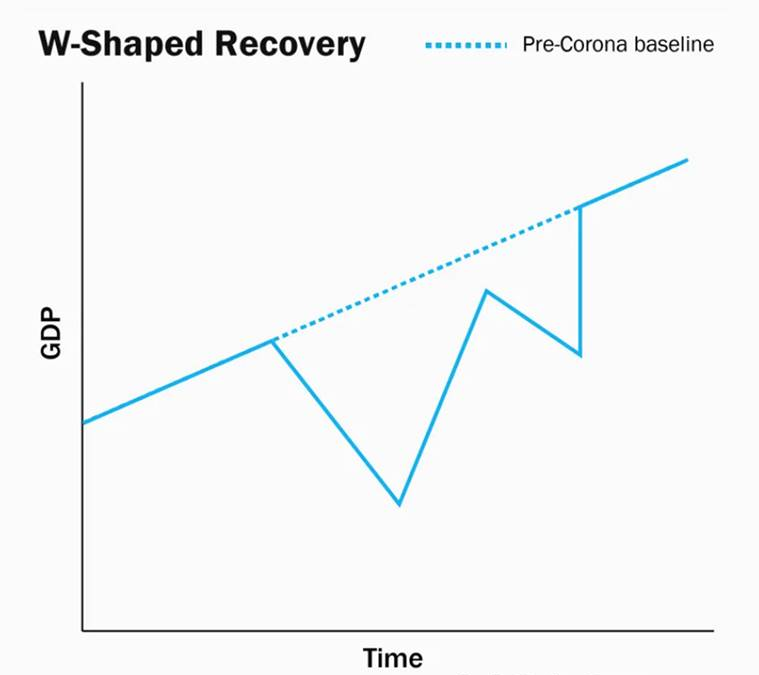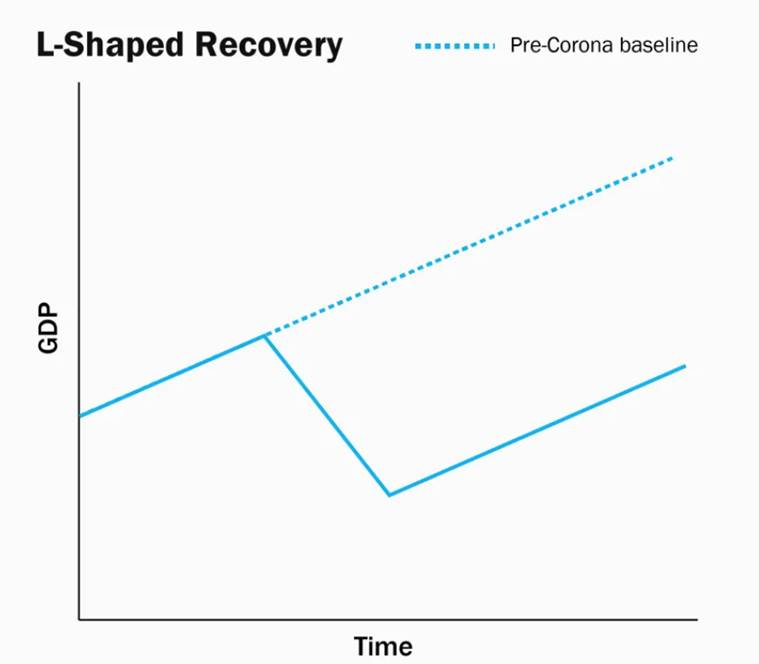Indian Economy
Shapes of Economic Recovery
- 08 Jun 2020
- 6 min read
Why in News
As India is going to come out of the Covid-19 lockdown, experts are debating over the shape of recovery of Indian economy.
Key Points
- The economists are unanimous that in the current financial year 2020-21, India’s economy will contract.
- According to the World Bank’s South Asia Economic Focus report, India’s growth is likely to remain at 1.5-2.8% in 2020-21 which is the slowest since 1991 economic reforms.
- Many economists are also of the opinion that after hitting the bottom this year, the Indian economy will start its recovery in the next financial year (2021-22).
- However, according to an analysis by Pronab Sen, former Chief Statistician of India, India’s economy will contract not just in the financial year 2020-21 but also in 2021-22.
- This means that India could experience a full-blown depression – the first in India’s history as an independent nation.
- The Table shows India’s absolute Gross Domestic Product (GDP) is likely to struggle to even come back to the 2019-20 level by 2023-24.
- India is likely to end up with an “elongated U-shape” recovery due to the weakness of the economy going into the Covid crisis as well as the inadequate fiscal stimulus measure taken by the government.
- The Table also provides a snapshot of the likely trend level of GDP had India grown at 6% and 8% respectively over the same period.
- Other economists are of the view that it is difficult to predict the shape of economic recovery in India at this juncture as there are too many unknowns.
- If there is no second wave of Covid-19, India can expect swift normalization from negative growth levels to the pre-covid levels of 5% and a gradual recovery to 7% by the second half of the next fiscal (2021-22).
Types of Shape of Economic Recovery
- Economic recovery can take many forms, which is depicted using alphabetic notations. For example, a Z-shaped recovery, V-shaped recovery, U-shaped recovery, elongated U-shaped recovery, W-shaped recovery and L-shaped recovery.
- The alphabets generally denote the graph of growth rate, which resembles the shape of the letter.
- The fundamental difference between the different kinds of recovery is the time taken for economic activity to normalize.
- The time taken is often a factor of multiple things such as the depth of the economic crisis. e.g deeper the recession, longer is the time to get back to normal.
- The other aspect of economic recovery includes the effect of pandemic on jobs and household incomes, and the kind of policy response taken by the government that determines how quickly economic growth will recover.
- Z-shaped recovery: It is the most-optimistic scenario in which the economy quickly rises after an economic crash.
- It makes up more than for lost ground before settling back to the normal trend-line, thus forming a Z-shaped chart.
- In this economic disruption lasts for a small period wherein more than people’s incomes, it is their ability to spend is restricted.
- V-shaped recovery: It is the next-best scenario after Z-shaped recovery in which the economy quickly recoups lost ground and gets back to the normal growth trend-line.
- In this, incomes and jobs are not permanently lost, and the economic growth recovers sharply and returns to the path it was following before the disruption.
- U-shaped recovery: It is a scenario in which the economy, after falling, struggles around a low growth rate for some time, before rising gradually to usual levels.
- In this case several jobs are lost and people fall upon their savings.
- If this process is more-long drawn than it throws up the “elongated U” shape.
- W-shaped recovery: A W-shaped recovery is a dangerous creature. In this, growth falls and rises, but falls again before recovering, thus forming a W-like chart.
- The double-dip depicted by a W-shaped recovery can be due to the second wave of the pandemic.
- L-shaped recovery: In this, the economy fails to regain the level of GDP even after years go by.
- The shape shows that there is a permanent loss to the economy’s ability to produce.



